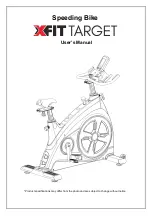
00100653.DOC, Version 1.0
25/44
The device falls under protection-class III. The device may only be recharged with the enclosed power unit.
Always plug in the power unit last. The power plug must always be inserted without force. Make sure that the
plug is connected properly with the outlet.
If the device has been exposed to drastic temperature fluctuation (e.g. after transportation), do not switch it
on immediately. The arising condensation water might damage your device. Leave the device switched off
until it has reached room temperature.
HEALTH HAZARD!
Never look directly into the light source, as sensitive persons may suffer an
epileptic shock (especially meant for epileptics)!
Please note that damages caused by manual modifications on the device or unauthorized operation by
unqualified persons are not subject to warranty.
Keep away children and amateurs!
Regarding Rechargeable batteries and Batteries
The given battery run time depends largely on the operating mode and ambient temperature. Low
temperatures will reduce the run time considerably. Before using the device for the first time, completely
charge the battery.
Rechargeable batteries/batteries are hazardous waste which needs to be disposed of appropriately. If the
device is to be disposed, the batteries have to be removed first. Take it to a local recycling plant for a
disposal which is not harmful to the environment. Do not dispose of rechargeable batteries/batteries into
household waste!
Make sure that the poles are correct when inserting the battery. Never let batteries lying around openly as
there is the danger that these can be swallowed by children or domestic animals. Immediately consult a
doctor when batteries are swallowed! Leaking or damaged batteries can cause irritations when getting into
contact with the skin. In this case use appropriate protective gloves. Make sure that the batteries cannot be
short-circuited, thrown into the fire and be charged. There is a danger of explosion.
The contained lithium-ion battery is subject to the Dangerous Goods Legislation requirements. The user can
transport the battery by road without further requirements. When being transported by third parties (e.g.: air
transport or forwarding agency), special requirements on packaging and labelling must be observed. For
preparation of the item being shipped, consulting an expert for hazardous material is required. Dispatch
battery only when the housing is undamaged. Tape or mask off open contacts and pack up the battery in
such a manner that it cannot move around in the packaging. Please also observe possibly more detailed
national regulations.
Summary of Contents for AKKU UP-1 QCL
Page 43: ......
Page 44: ...AKKU...
















































